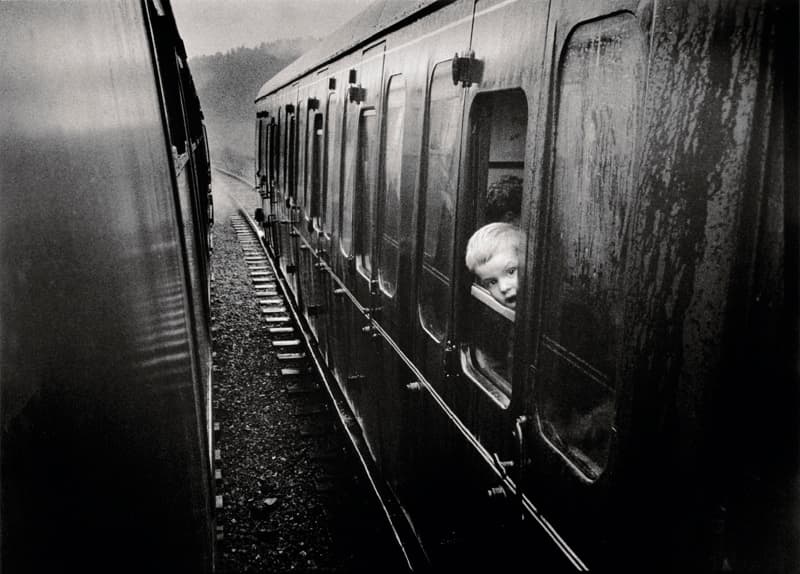Photo Insight with Andrew Sanderson

A renowned photographer, tutor, author and Ilford Master Printer, Andrew Sanderson offers practical tips on working with film and traditional darkroom techniques
Around ten years ago, my wife and I took our three young children on a vintage steam-train journey, travelling from Sheringham to Holt in north Norfolk. Each child was convinced they were about to travel on Thomas the Tank Engine, so it was a really magical day for them.
As we sat on board the train in the station, I looked across at another train that had pulled up next to us. I could see the steam drifting across from the engine and decided that I’d take a shot looking between the carriages. I managed to take a few frames when suddenly a young boy popped his head out of the other train. I had a split second to take the shot before he was gone. In the end, I had just one frame of the incident – the one here.
I’m the kind of photographer who, even on days out with the family, will always have a camera hanging around my neck. I try to carry one all the time, although the model will tend to vary. Depending on what I’m interested in at the time, it can range from medium format to 35mm.
At the time this image was taken, I was carrying around an Olympus Pen EE-2, which is a half-frame camera. What this means is that each shot is only half the frame size of what it would be in a standard 35mm camera, so you end up with a roll of film that contains 72 shots. The consequence of this from a printing perspective is that your prints are twice as grainy. To get a 10x8in print from a 35mm negative you have to enlarge it eight times, but as this was a half-frame image I had to enlarge it 16 times. Therefore, the grain is significantly more pronounced. The lens is incredibly sharp on the Pen EE-2, so I still had an incredibly sharp image – it was just a little grittier.

The EE-2 is a fully automatic camera, so the only thing I really had control over was the framing. It’s a fixed-focus model with a 28mm lens, and if you’re using a fast film the aperture closes down to something like f/8 or f/11 for most situations. This gives just the right amount of depth of field for most situations. The EE-2 was a camera that was aimed much more at the snapshot market in the 1950s and ’60s. It has a simple wheel at the back that is used to wind it on, then you press the shutter and you’ve got the shot. It’s great for something like street photography. I suppose the real drawback about using one of these now is that you have to process the film yourself because most labs won’t touch half-frame images – the machines they use tend to get a little confused when looking for the gaps between shots.
Using a camera like the EE-2 is very different from using something like a medium-format model. When I’m shooting medium format, I’m a lot more economical with my shots. I take my time and consider exactly what it is I want to do. When shooting half-frame, I find that I don’t walk away from shots. I take any shot that grabs my interest and I find that quite liberating.
The printing process for this particular image was tricky, to say the least. I had to try to draw out details in the darker tones, in the highlights of the steam and in the child’s face. There was a lot of dodging and burning involved, and it’s difficult to do this and then make it look as though it hasn’t been done. If it’s not carried out properly, you could well end up with a lot of strange-looking overlapping tones and heavily burnt-in areas.
I needed to bring as much information out of the negative as I could without it appearing heavy-handed. It’s a skill I have developed over the years and there’s a lot of time and effort involved. Learning how to do the hand shapes and how to cut out exactly the right shapes to mask the necessary areas of the shots is a lengthy process. On top of that, I had to work out exactly the right exposure for the negative. It took me half a day to produce this print, but actually that’s half a day plus 30 years’ experience.

If you would like to read more about paper negatives, Andrew’s book Paper Negative Photography is available from www.blurb.com, price £15
Andrew Sanderson was talking to Oliver Atwell







